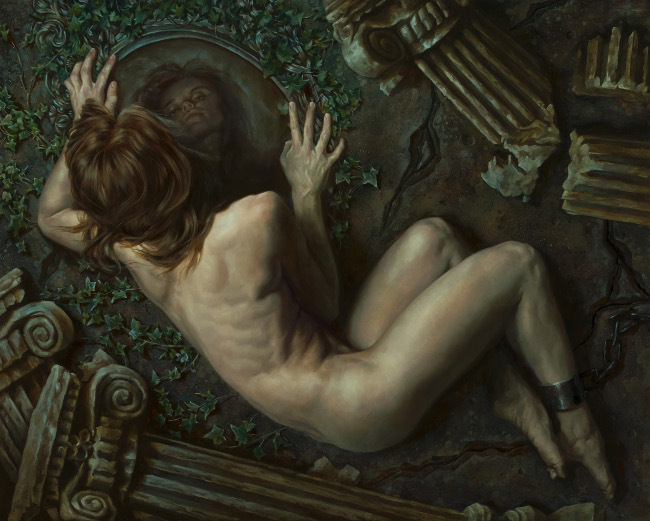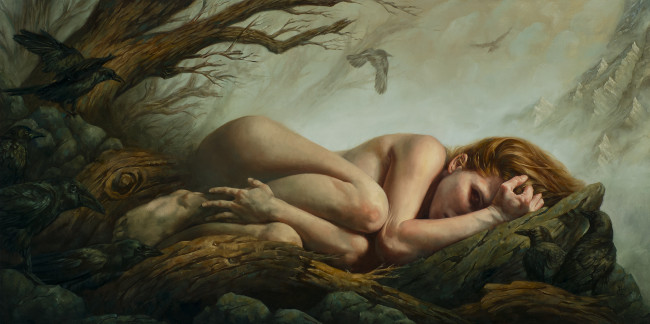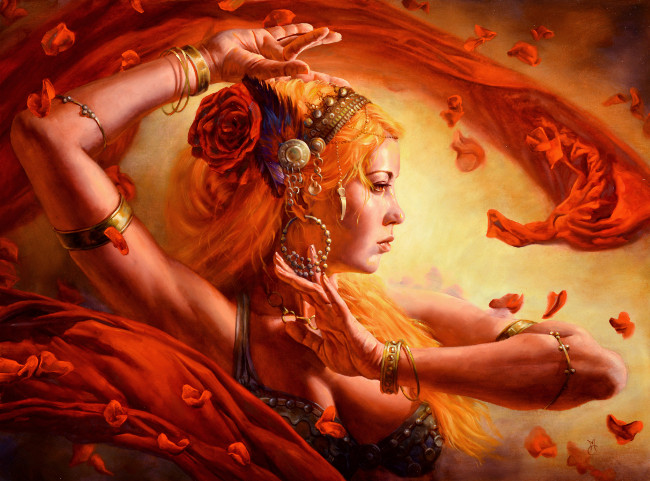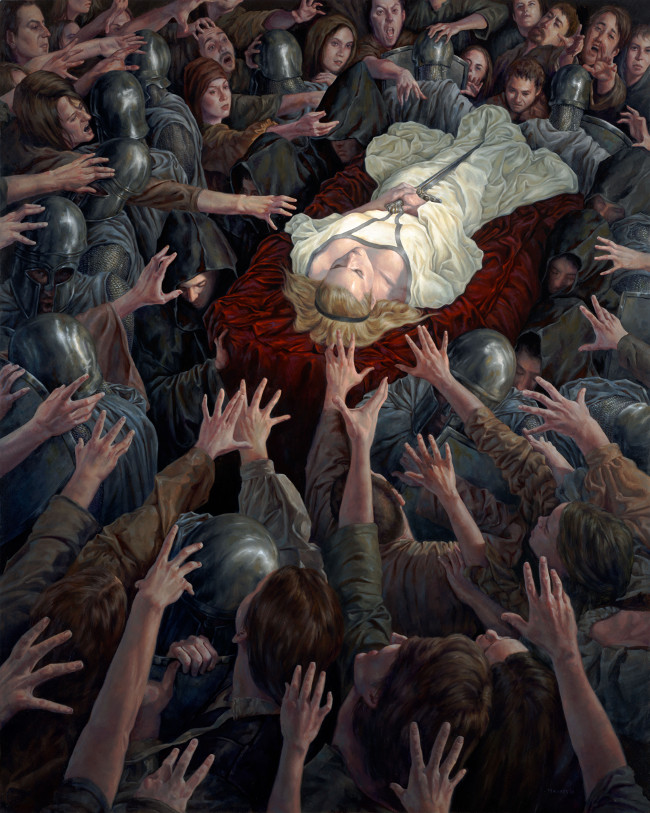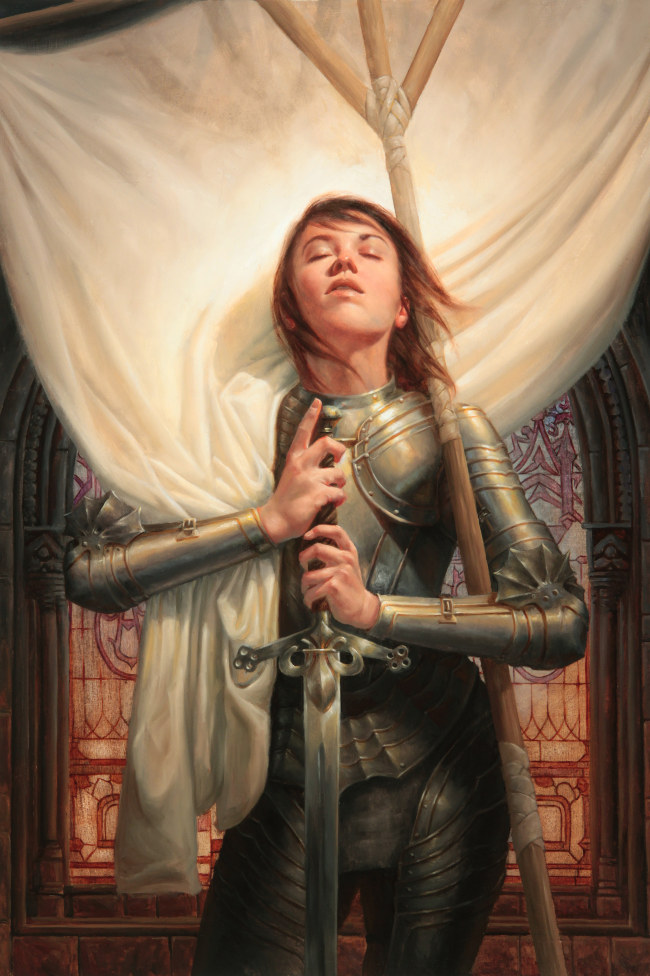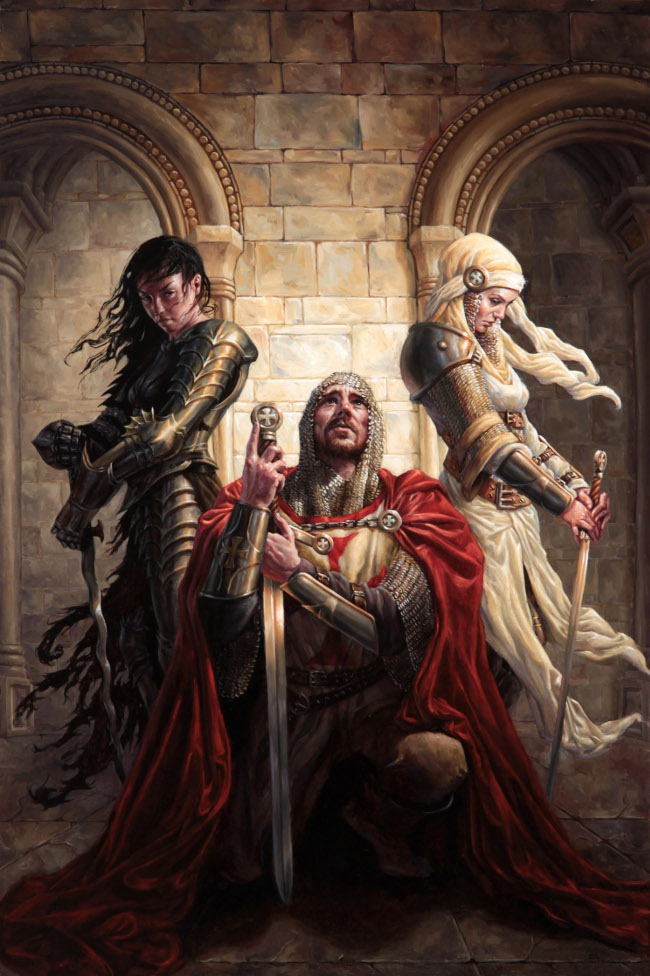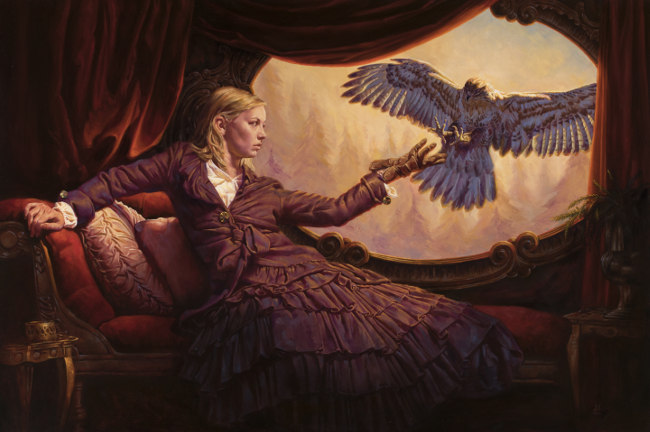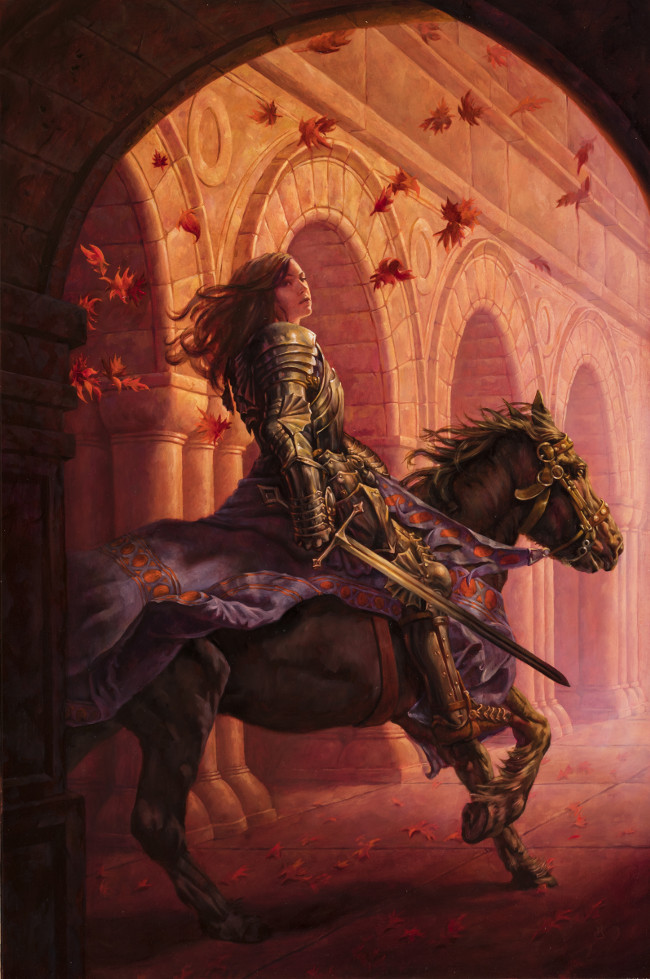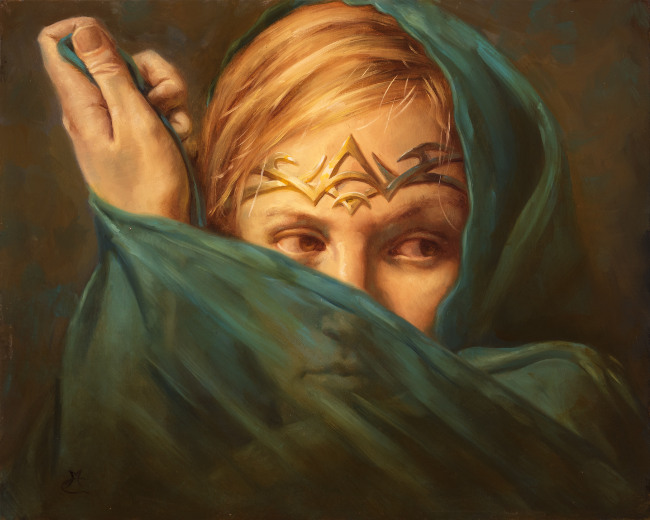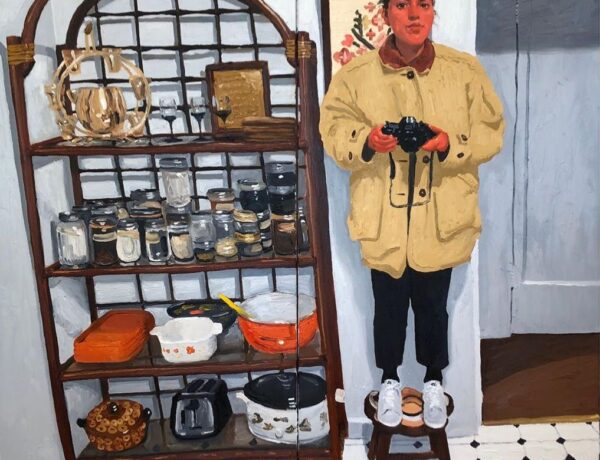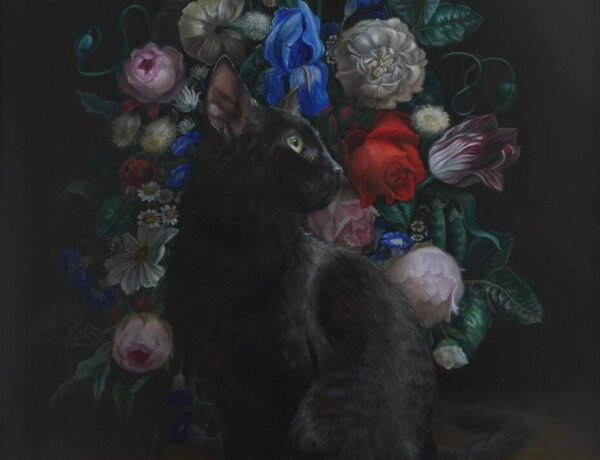 If you’re familiar with the work of Michael C. Hayes, it’s hard not imagine his delicate brush strokes forged through a childhood of drawing extraordinary visions from his very first breath. I was in for a surprise, then, when I read his online bio, which opened with a simple yet unusual introduction stating: “If you had told me I would end up painting for a living when I was 17, I would have assumed you meant houses or cars”. His career had first started in software engineering. I remember thinking about this repeatedly; more than anything, it was not only refreshing but also inspiring to see an alternative route into art, especially from such a prolific painter.
If you’re familiar with the work of Michael C. Hayes, it’s hard not imagine his delicate brush strokes forged through a childhood of drawing extraordinary visions from his very first breath. I was in for a surprise, then, when I read his online bio, which opened with a simple yet unusual introduction stating: “If you had told me I would end up painting for a living when I was 17, I would have assumed you meant houses or cars”. His career had first started in software engineering. I remember thinking about this repeatedly; more than anything, it was not only refreshing but also inspiring to see an alternative route into art, especially from such a prolific painter.
Recently I had the chance to finally ask Michael: what was it like to discover a whole new side to yourself?
“In all honesty, it was terrifying and exhilarating” he muses. “I thought I had my life plan all figured out and had just invested tons of money and several years pursuing it. Furthermore, I was not at all any good at drawing and painting and I was aware of the fact that I would be competing against people who had drawn their whole life. But, realizing I had this whole new world open to me, and would be travelling a difficult, yet worthwhile journey – it was exhilarating.”
Byzantium
Without wholly confining Michael’s works to one definition, his paintings are often characterised as a pillar of imaginative realism supported somewhat by the reputation of some of his clients (Wizards of the Coast and Blizzard Entertainment to name a few), as well as his array of fantastical themes. Even during his years working in the digital arts, fantasy played a huge role in his creations: “I’ve been seriously into this subject matter for as long as I can remember. From childhood onward, I would devour any books, watch any movies and play any video games that were related to either medieval history or imaginative worlds. If nothing else in my career has been consistent, that has.”
The pathway to painting began when Michael learned that to graduate; he had to take an art elective. Forced into the arts, he chose to study animation, from which he discovered his love for drawing. “I was slowly spending more and more time and effort on my traditional drawing, painting, and sculpting courses and less time building wire frames on the computer.” he explains on his website. “By the time I was ready to graduate my goals had once again changed.”
After graduating in 2005, Michael studied at Watts Atelier of the Arts – “a tiny two classroom school north of San Diego” he recalls with warmth. The gratification towards his teachers is heartfelt. Sharing centuries of old techniques and exercises, his mentors also passed on their current experiences of working in the modern marketplace. The amalgamation of old and new knowledge created an invaluable foundation, one from which he has fully rooted to become one of today’s most well respected imaginative realism painters.
Oracle
Artemis
Interestingly, his journey from designing to finishing a painting varies drastically; “at the moment, my favorite method of working is to have everything revolve around the figures pose,” Michael explains. “So, I’ll spend a lot of time sketching out rough poses as well as looking at photographers, videos of dancers and other sources for ideas I can flesh out. I run uninstructed figure drawing sessions at my alma mater every Friday night, so most of my models are either professionals or other artists I have met there. Being able to draw someone repeatedly and develop a friendship before working with them is extremely helpful. Once I have about 8-9 poses I like I’ll hire a model and figure out the costume and jewelry (if any). I usually work with a model for about 3 hours working out different variations and lighting for each pose. Usually only the half the ideas end up working out and I have to move on from the rest. That’s fine; it’s part of the process.”
From here, Michael reverts to small, quick sketches and photo composites to design a loose narrative with all of its supporting elements. The process continues to build until a detailed drawing is born. After a selection of colour studies (“I used to do these digitally, but [I’ve] started doing them in oil as well) Michael moves on to the final painting. Building up a full colour underpainting with thin transparent stains of oil, he moves section by section with opaque painting to work out all of the forms and colour harmonies. In the final touches, a subtle glazing completes the painting to help bring it altogether.
Haven
Alegretto
Looking back, Michael remembers the time he was approached by Pat and Jeannie Wilshire, owners of IX Arts. Though still rather new to the industry at the time, he was lucky enough to be chosen as one of their commissioned artists for their 2012 annual IX show. He recollects the experience: “To be asked to create something that would help represent a gathering of so many of the titans of imaginative realism was incredibly humbling, and a little terrifying. I ended up working harder on that piece that anything else in my life! I couldn’t make the first one, but I go [to IX] every year, no matter what. It is both the social highlight of the year and I treat my exhibit with all the seriousness that I would a solo gallery show.”
The final IX commissioned piece, Procession, is still the physically largest and most complex painting that Michael has done to date.
Procession
Though visually Michael’s style has stayed fairly uniform, his goals within the realms of painting have changed with immense satisfaction. As part of his evolution from freelance artistry (which would often confine him to painting specific, commissioned content), he was able to expand even further.
“Nowadays I am trying to use all these historic and imaginative elements to portray very real stories and emotions. For example, my painting “Exodus” is a woman on a horse, in armor, with a sword, leaving a castle. But the painting is really about my decision to leave freelance work and all the fear, anxiety and unknowns that accompanied that.”
It is clear another special painting is Michael’s depiction of Joan of Arc.
“Joan of Arc will forever be special to me. It was a huge artistic breakthrough on many levels and really helped get my career going at a time when I was really wondering if I was gonna make it or not. It has resonated emotionally with more people than anything else I have ever done. I still get emails from random people who say they have drawn inspiration from it. I really wanted to be able portray what the actual Joan of Arc must have been feeling. So getting inside the head of a medieval teenage girl who believed she was chosen by god to expel the English from France certainly pushed the boundaries of the imagination of a guy from modern day Southern California who’s biggest responsibility was getting paintings done on deadline.”
Joan of Arc
This element of strong female figures has become a signifying feature to his paintings. “In hindsight,” he explains, “I had tons of them [growing up]. Family, friends, teachers, authors, fictional protagonists… the list goes on. But because I was surrounded by so many of them, it was never anything I consciously noticed. It was normal. As an artist, I paint a lot of women because that is what I like to paint. But, I paint them as strong women because that is how I have always seen them, to portray women in any other light requires a conscious effort on my part and never feels right. I seriously never thought I was doing something that would be remarked upon. I think the fact it is remarked upon so often says a lot more about the deficits in our culture and media than it does about the intentions behind my work.”
I have to ask him one last question before we part: is there anything else that you can sneakily share with us?
“Alphonse Mucha has always been a subtle influence on my work, but after doing a Mucha themed painting for an art history themed group show, I’m actually planning a whole series of works where that influence is much more pronounced, yet still painted in my realist style. The kicker is that, instead of painting all the design work and borders that is in so much of his work. I am planning to work with a laser cutter to create some elaborate, multi layered custom wood frames that are visually and thematically integrated with the painting.
I’m still experimenting with this a bunch at the moment, but if it works out it could end up shifting the direction of my work for the next little while.”
As the convention season begins, you can look forward to seeing Michael C. Hayes at a variety of pop culture conventions across the U.S. as well as IX Gallery’s inaugural show in June and the Heavy Metal tribute show at Copro Gallery in July 2017. He is also currently working on a selection of new works to display at IX 10, the special tenth annual exhibit of IX this October in Reading, PA.
Miserere
Falconress
Exodus
Shroud
Familiar



